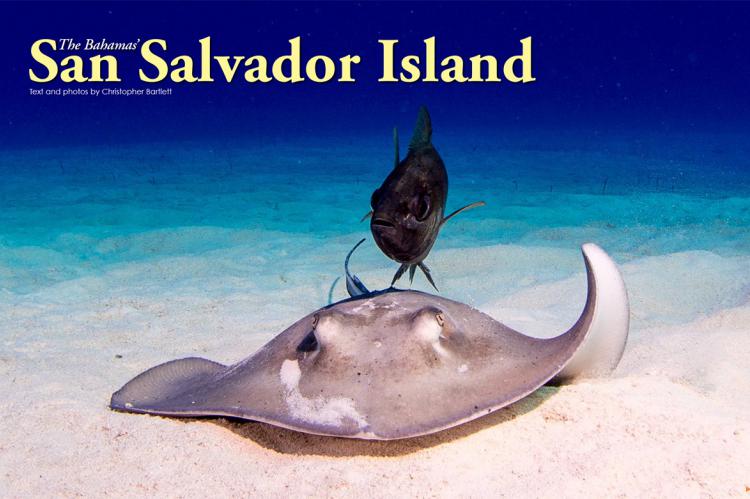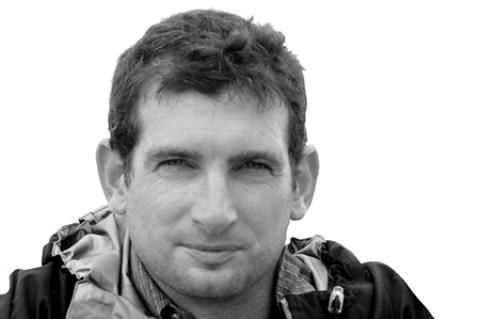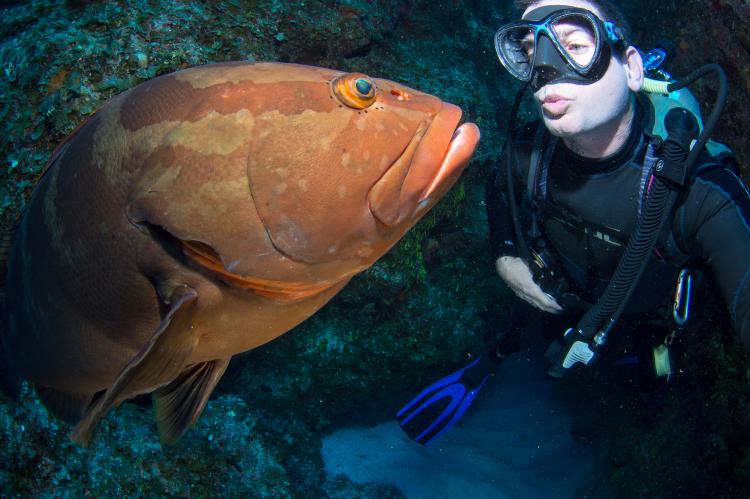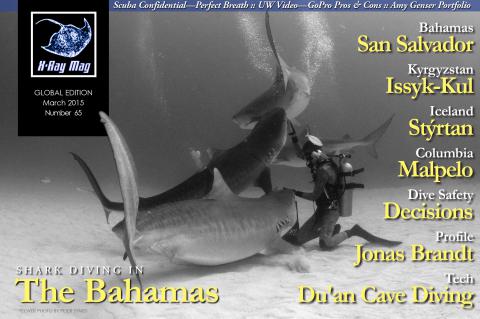Bahamas' San Salvador Island
A fifty-minute flight southeast from the bustle, cruise ships and tourist-centric Nassau, lies the sleepy island of San Salvador. Twelve miles long and five miles wide, she is the tip of an underwater mountain rising from 5,000 metres below (15,000 feet) surrounded by picture-postcard, crystal-clear, blue seas.
Tags & Taxonomy
Now home to 1,200 Bahamians, "San Sal" has a past as colourful as her long sandy beaches are white. The native Lucayan Indians who had settled there around the 6th century AD called her "Guanahani". Then, in 1492, Columbus made his first landfall here and renamed her "San Salvador", or "Holy Saviour". In his journal, he noted "the beauty of these islands surpasses that of any other".
I would disagree as, great traveller as he was, he didn't have air miles and didn't just spend weeks on end staring at the horizon wondering where in salvation land might be. Alcatraz would have probably looked pretty stunning to him then too. That said, the long beaches are almost as deserted as they were then—there is one hotel chain and one 42-room, family-owned-and-run hotel on the island.
In the 17th century, British buccaneer and loyalist John (aka George) Watling took over the island. Fittingly, he was known as the “pious pirate” as he forbade attacks and gambling on the Sabbath. The ruins of his large plantation house, estate and lookout tower are still points of interest today. The island only regained her current moniker in 1925, even though, much to the chagrin of the locals, Club Med had tried to rebrand her as "Columbus Isle".
The centre of the island has many lakes, waterways and archaeological points of interest on the sites of native Lucayan settlements, and is home to a range of birdlife, wild hogs and goats. The area can be explored by renting a car or golf cart, or on a guided tour. But these are small bonuses—San Sal's big draw is underwater.
Below the surface
Whilst her windward east coast is often rough, the leeward side is mostly as flat as a pancake; azure blue at the water's edge, turning to cobalt, sapphire and finally indigo blue over the wall. It is only a short boat ride to the wall, which starts at 10 metres (30 feet) deep.
Striding off the boat, you can see the sandy bottom—a haven for stingrays—turn into coral reefs, with fans and sponges acting as meeting points for grunts and snappers. The hue of the blue and its 30- to 50-metre (90- to 150-foot) viz is mesmerising in itself.
Upon reaching the edge of the wall, more sizeable company generally turn up pretty fast. Nassau groupers are common, jacks flit around, and the longest I had waited to see a reef shark was two minutes. Most dive sites seem to be patrolled by two to four of our cartilaginous friends, either Caribbean reef or blacktip sharks.
And when the water temperature drops below 25˚C (76˚F), scalloped hammerheads return for the winter. I've dived with sharks all over the world, and these ones come as close as any I've seen on a baited or fed dive, just without any food being put in the water—it is a fantastic, natural experience.
The topography of the wall is varied, with overhangs, cracks, swim-throughs, and some stunning chimneys. In particular, Santa Claus' chimney to the south of the island is a cracker, dropping from the top of the reef down to 40 metres (130 feet).
The cracks and crevices shelter a variety of eels, lobsters and shrimps, as well as gobies and blennies. The walls are adorned with barrel, rope and vase sponges—a veritable feast for the healthy hawksbill turtle population. Throw in some wrecks, vertical coral pillars, the "Cathedral", and another 40-plus dive sites, and there is enough diving to keep you busy for at least a week.
Back on shore, Michelle, Peaches, Jason and the crew of Riding Rock Inn provide simple, comfortable air-conditioned beachfront accommodation, complete with three hearty meals a day (there aren't many skinny Bahamians). The Driftwood Bar on the premises offers free rum punch and conch fritters on Monday evenings. Cars or vehicles can be hired, and the main, but small, settlement of Cockburn (pronounced "Coburn") Town is a 10-minute stroll down a sandy road. Nature walks, historical tours and game fishing can be arranged. ■
The author thanks Indigo Safaris (www.indigosafaris.com), the dive travel specialists through whom he arranged his trip to the Bahamas. Christopher Bartlett is a widely published British underwater photographer and dive writer based in France. He leads photographic safaris to locations like the Bahamas, Turks and Caicos Islands, as well as locations in Africa, teaching underwater workshops in Zanzibar and Papua New Guinea. For more information, visit: www.bartlettimages.com.
Download the full article ⬇︎

Originally published
X-Ray Mag #65
Diving with tiger sharks in the Bahamas; San Salvador Island; Ancient remains in Kyrgyzstan's Lake Issyk-Kul; Iceland's hydrothermal vents at Stýrtan; Malpelo Island; Wreck diving on the HMS Warrior II; Dive safety decisions; PFO & diving; Poseidon's CEO Jonas Brandt profile; Cave diving in China's Du'an county; Scuba Confidential on the perfect breath; A case for unsweetened tea; GoPro's pros & cons; Amy Genser portfolio; Plus news and discoveries, equipment and training news, books and media, underwater photo and video equipment, shark tales, whale tales and much more..
.



